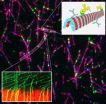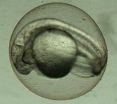(Press-News.org) Ottawa, Canada (November 8, 2012) – Scientists have named a new species of horned dinosaur (ceratopsian) from Alberta, Canada. Xenoceratops foremostensis (Zee-NO-Sare-ah-tops) was identified from fossils originally collected in 1958. Approximately 20 feet long and weighing more than 2 tons, the newly identified plant-eating dinosaur represents the oldest known large-bodied horned dinosaur from Canada. Research describing the new species is published in the October 2012 issue of the Canadian Journal of Earth Sciences.
"Starting 80 million years ago, the large-bodied horned dinosaurs in North America underwent an evolutionary explosion," said lead author Dr. Michael Ryan, curator of vertebrate paleontology at The Cleveland Museum of Natural History. "Xenoceratops shows us that even the geologically oldest ceratopsids had massive spikes on their head shields and that their cranial ornamentation would only become more elaborate as new species evolved."
Xenoceratops (Xeno + ceratops) means "alien horned-face," referring to the strange pattern of horns on its head and the scarcity of horned dinosaur fossils from this part of the fossil record. It also honors the Village of Foremost, located close to where the dinosaur was discovered. Xenoceratops had a parrot-like beak with two long brow horns above its eyes. A large frill protruded from the back of its skull featuring two huge spikes.
"Xenoceratops provides new information on the early evolution of ceratopsids, the group of large-bodied horned dinosaurs that includes Triceratops," said co-author Dr. David Evans of the Royal Ontario Museum and University of Toronto. "The early fossil record of ceratopsids remains scant, and this discovery highlights just how much more there is to learn about the origin of this diverse group."
The new dinosaur is described from skull fragments from at least three individuals from the Foremost Formation originally collected by Dr. Wann Langston Jr. in the 1950s, and is currently housed in the Canadian Museum of Nature in Ottawa, Canada. Ryan and Evans stumbled upon the undescribed material more than a decade ago and recognized the bones as a new type of horned dinosaur. Evans later discovered a 50-year-old plaster field jacket at the Canadian Museum of Nature containing more skull bones from the same fossil locality and had them prepared in his lab at the Royal Ontario Museum.
This dinosaur is just the latest in a series of new finds being made by Ryan and Evans as part of their Southern Alberta Dinosaur Project, which is designed to fill in gaps in our knowledge of Late Cretaceous dinosaurs and study their evolution. This project focuses on the paleontology of some of the oldest dinosaur-bearing rocks in Alberta, which is less intensely studied than that of the famous badlands of Dinosaur Provincial Park and Drumheller.
"This discovery of a previously unknown species also drives home the importance of having access to scientific collections," says co-author Kieran Shepherd, curator of paleobiology for the Canadian Museum of Nature, which holds the specimen. "The collections are an untapped source of new material for study, and offer the potential for many new discoveries."
Xenoceratops was identified by a team comprising palaeontologists Dr. Michael J. Ryan, curator of vertebrate paleontology at The Cleveland Museum of Natural History; and Dr. David Evans, curator, vertebrate palaeontology of the Department of Natural History at the Royal Ontario Museum; as well as Kieran Shepherd, curator of paleobiology for the Canadian Museum of Nature. Their findings are published today in the Canadian Journal of Earth Sciences (CJES).
### END
Meet Xenoceratops: Canada's newest horned dinosaur
Xenoceratops provides new information on the early evolution of ceratopsids, the group of large-bodied horned dinosaurs that includes Triceratops
2012-11-08
ELSE PRESS RELEASES FROM THIS DATE:
UMass Amherst cell biologists identify new protein key to asymmetric cell division
2012-11-08
AMHERST, Mass. – Recently biologists at the University of Massachusetts Amherst led by Wei-lih Lee have identified a new molecular player in asymmetric cell division, a regulatory protein named She1 whose role in chromosome- and spindle positioning wasn't known before. Asymmetric cell division is important in the self-renewal of stem cells and because it ensures that daughter cells have different fates and functions.
When a fertilized egg develops in a fruit fly or a human being, the number of asymmetric cell divisions must be precisely balanced by symmetric cell divisions, ...
Scientists reveal key protein interactions involved in neurodegenerative disease
2012-11-08
JUPITER, FL, November 8, 2012 – Scientists from the Florida campus of The Scripps Research Institute (TSRI) have defined the molecular structure of an enzyme as it interacts with several proteins involved in outcomes that can influence neurodegenerative disease and insulin resistance. The enzymes in question, which play a critical role in nerve cell (neuron) survival, are among the most prized targets for drugs to treat brain disorders such as Parkinson's disease, Alzheimer's disease and amyotrophic lateral sclerosis (ALS).
The study was published online ahead of print ...
Unique spinal nerve cell activity discovery announced by University of Leicester biologists
2012-11-08
Scientists from the University of Leicester have hit upon unique forms of spinal nerve activity that shape output of nerve cell networks controlling motor behaviours.
The breakthrough in the Department of Biology at the University of Leicester is announced today (5pm GMT on Thursday Nov 8) in the journal Current Biology. The three- year study was funded by the Biotechnology and Biological Sciences Research Council (BBSRC).
Although the neural basis of motor control has been studied for over a century, the processes controlling maturation of locomotor behaviours – like ...
Rethinking body mass index for assessing cancer risk
2012-11-08
November 8, 2012 — (Bronx, NY) — A study by researchers at Albert Einstein College of Medicine of Yeshiva University suggests that body mass index (BMI)—the most commonly used weight-for-height formula for estimating fatness—may not be the best measure for estimating disease risk, and particularly the risk of certain types of cancer. The study was published today in the online edition of the American Journal of Epidemiology.
BMI is calculated by dividing a person's weight (in kilograms) by his or her height in meters squared, or W/H2. Most of the early studies that ...
Cells from skin create model of blinding eye disease
2012-11-08
MADISON — For the first time, Wisconsin researchers have taken skin from patients and, using induced pluripotent stem cell (iPSC) technology, turned them into a laboratory model for an inherited type of macular degeneration.
Dr. David Gamm, director of the UW's McPherson Eye Research Institute, said that while Best disease is relatively rare, having a patient-specific model of the eye disease, which destroys the macula of the retina, could lead to a greater understanding of more common eye disorders such as age-related macular degeneration.
"This model gives us a chance ...
Dream symbols could help in psychotherapy
2012-11-08
Dream images could provide insights into people's mental health problems and may help with their treatment, according to a psychology researcher from the University of Adelaide.
Dr Lance Storm, a Visiting Research Fellow with the University of Adelaide's School of Psychology, has been studying dream symbols (or "archetypes") and their meanings, as described by the famous psychologist and psychiatrist, Carl Jung.
In the early 1900s, Jung proposed that these archetypes were ancient images stemming from humans' collective unconscious. He believed that dream symbols carried ...
Injection is the best method for cutting ammonia emissions from slurry spreading on lands
2012-11-08
In order to contribute to the development of the primary sector and environmental care, the Basque Institute of Agricultural Research and Development, NEIKER-Tecnalia, has analysed various ways of spreading slurry on arable land to determine the most appropriate way of cutting the amount of ammonia that is released into the atmosphere.
The three methods studied were: the traditional splash plate or fan method, hanging pipes, or injection. The last one turned out to be the most environmentally friendly in terms of ammonia emissions (NH3), as it achieves a 93% cut in NH3 ...
Carbon dioxide – our salvation from a future ice age?
2012-11-08
Mankind's emissions of fossil carbon and the resulting increase in temperature could prove to be our salvation from the next ice age. According to new research from the University of Gothenburg, Sweden, the current increase in the extent of peatland is having the opposite effect.
"We are probably entering a new ice age right now. However, we're not noticing it due to the effects of carbon dioxide", says researcher Professor Lars Franzén.
Looking back over the past three million years, the earth has experienced at least 30 periods of ice age, known as ice age pulses. ...
Pull with caution
2012-11-08
As nanotechnology progresses, it becomes increasingly important to know in detail the dynamics of the nanoworld (the world at the scale of a millionth of a millimeter). What happens, for example, when we try to drive a polyelectrolyte (a long chain of electrically charged molecules, such as DNA) through a nanopore if knots cause the translocation process to jam? It's not a pointless question, because now a new DNA sequencing method to electrochemically analyze every single strand by driving it through a nanopore, is being developed. Since those strands tend to tangle up ...
Environmentally friendly chemistry important for manufacturing pharmaceuticals
2012-11-08
Limiting the quantity of catalysts – substances that trigger a chemical reaction – used in the manufacture of pharmaceuticals is important, and research from the University of Gothenburg, Sweden, has now demonstrated that small quantities of copper work well in this respect.
"This is an important finding, not just academically but also for industry," says chemist Per-Fredrik Larsson.
Catalysis is an incredibly valuable tool in the field of chemistry, with the Haber-Bosch process being one of the most important catalytic processes in the world. It is used to manufacture ...
LAST 30 PRESS RELEASES:
How do childcare tax credits affect children’s long-term health?
Can an electronic nose detect indoor mold?
Do natural disasters have long-term impacts on mortality in older adults?
Modification improves sodium‐ion batteries as an alternative to lithium-ion batteries
Parasports provide a range of benefits for people with cerebral palsy
How does grandparental care affect children’s health?
Why are there so many Nordic mediators?
Young shark species more vulnerable to extinction
Mobile fetal heart monitoring linked to fewer newborn deaths in Tanzania
Bluey’s dad offered professorial chair in archaeology at Griffith University
Beyond small data limitations: Transfer learning-enabled framework for predicting mechanical properties of aluminum matrix composites
Unveiling non-thermal catalytic origin of direct current-promoted catalysis for energy-efficient transformation of greenhouse gases to valuable chemicals
Chronic breathlessness emerging as a hidden strain on hospitals
Paleontologists find first fossil bee nests made inside fossil bones
These fossils were the perfect home for ancient baby bees
Not everyone reads the room the same. A new study examines why.
New research identifies linked energy, immune and vascular changes in ME/CFS
Concurrent frailty + depression likely boost dementia risk in older people
Living in substandard housing linked to kids’ missed schooling and poor grades
Little awareness of medical + psychological complexities of steroid cream withdrawal
Eight in 10 trusts caring for emergency department patients in corridors, finds BMJ investigation
NASA’s Webb telescope finds bizarre atmosphere on a lemon-shaped exoplanet
The gut bacteria that put the brakes on weight gain in mice
Exploring how patients feel about AI transcription
Category ‘6’ tropical cyclone hot spots are growing
Video: Drivers struggle to multitask when using dashboard touch screens, study finds
SLU research shows surge in alcohol-related liver disease driving ‘deaths of despair’
Rising heat reshapes how microbes break down microplastics, new review finds
Roots reveal a hidden carbon pathway in maize plants
Membrane magic: FAMU-FSU researchers repurpose fuel cells membranes for new applications
[Press-News.org] Meet Xenoceratops: Canada's newest horned dinosaurXenoceratops provides new information on the early evolution of ceratopsids, the group of large-bodied horned dinosaurs that includes Triceratops




